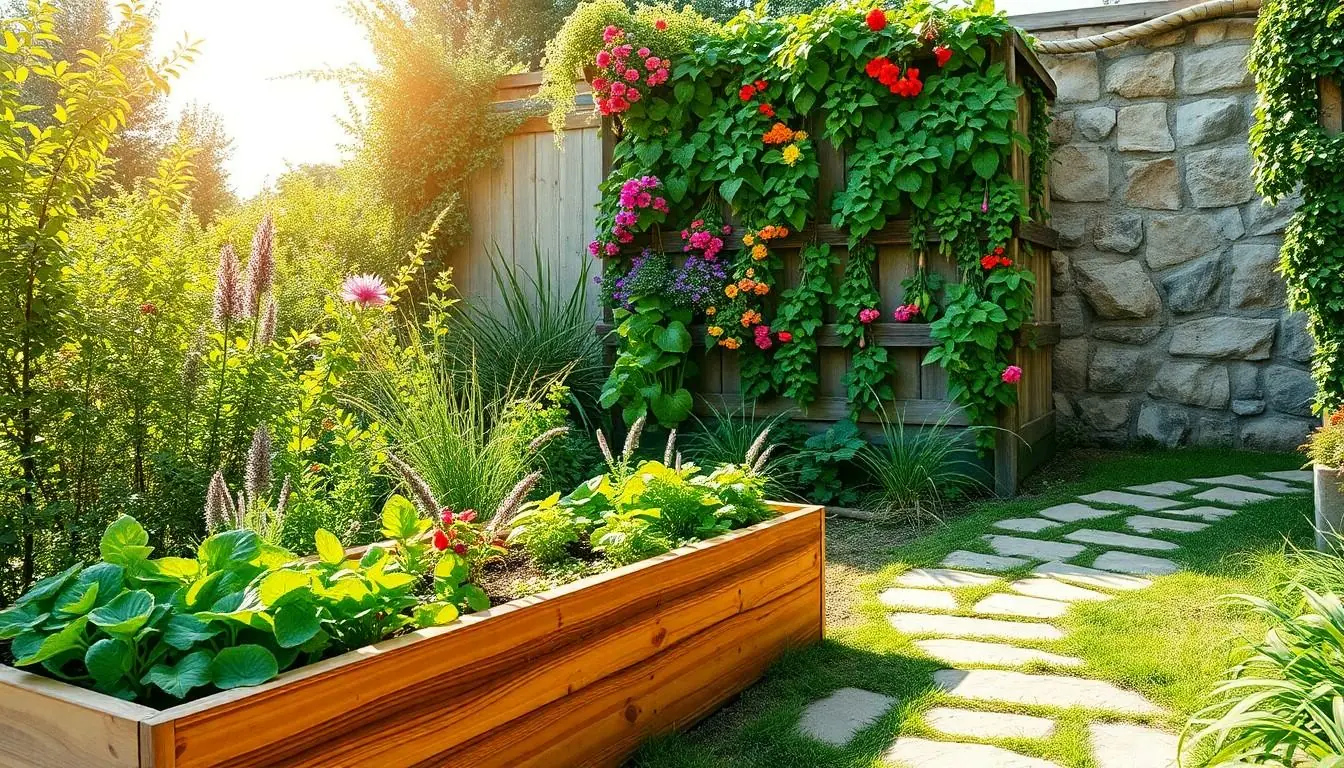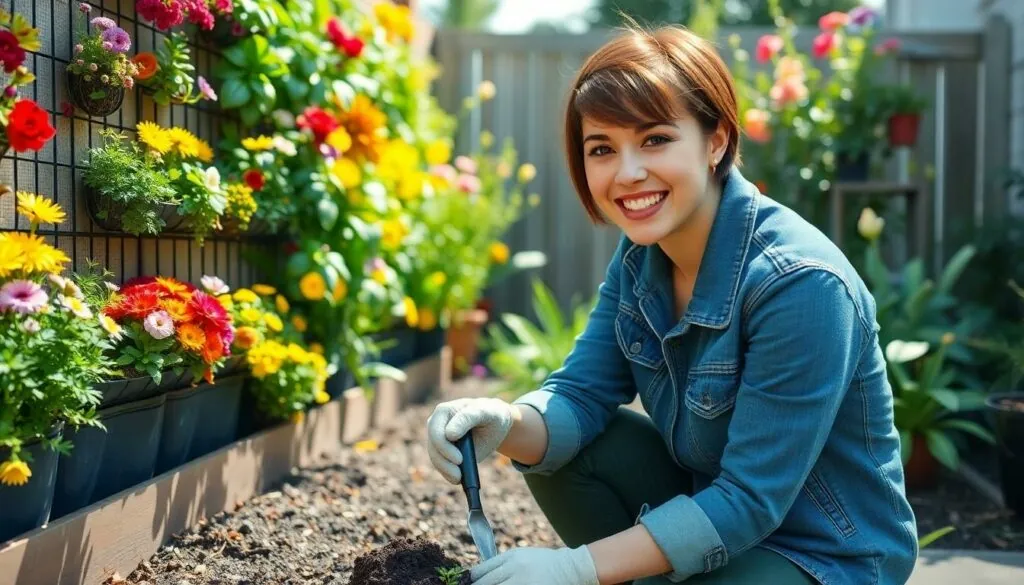Table of Contents
ToggleTransforming an ordinary backyard into a lush oasis doesn’t have to break the bank or require a degree in landscape architecture. With a sprinkle of creativity and a dash of elbow grease, anyone can dive into the world of DIY garden projects. Whether it’s building a quirky birdhouse or crafting a chic vertical garden, these projects not only beautify outdoor spaces but also provide a refreshing escape from the daily grind.
Benefits of DIY Garden Projects
DIY garden projects offer numerous advantages, making outdoor creativity both accessible and rewarding. These benefits enhance the gardening experience and provide meaningful contributions to personal spaces.
Cost Savings
Cost savings stand out as a primary advantage of DIY garden projects. Homeowners save significant amounts by forgoing professional services, which can often exceed $1,000 for landscaping. According to the National Association of Realtors, simple projects like planting trees or flower beds can cost as little as $200. Building a compost bin or creating raised garden beds requires minimal investment in materials, further reducing expenses. Individuals who implement budget-friendly techniques can stretch every dollar further. Additionally, growing one’s own vegetables leads to further savings on grocery bills. Overall, DIY projects empower gardeners to achieve beautiful spaces without financial strain.
Personal Satisfaction
Personal satisfaction serves as another key benefit of engaging in DIY garden projects. Completing a project fosters a sense of achievement, enhancing well-being and boosting self-esteem. Many gardeners feel joy from nurturing plants and witnessing their growth, creating a deeper connection to nature. Individuals gain confidence as they develop new skills, like woodworking for birdhouses or designing unique garden layouts. Participating in these activities also provides an opportunity for creative expression. Capturing vision in a physical form enables a unique connection between creator and space. This satisfaction leads to enhanced enjoyment and a more fulfilling gardening experience.
Popular DIY Garden Projects

Many gardeners enjoy tackling popular DIY garden projects. These projects enhance outdoor spaces while offering creative outlets.
Raised Garden Beds
Raised garden beds provide excellent drainage and prevent soil compaction. Position them in sunny spots for optimal plant growth. Constructing these beds is straightforward with materials like wood or bricks. Fill them with quality soil to boost plant health. Many gardeners appreciate how raised beds reduce pest problems, making maintenance easier. Choosing the right dimensions ensures plants have enough space to thrive, maximizing yields.
Vertical Gardens
Vertical gardens maximize limited space effectively. These installations allow for a diverse range of plants, from herbs to flowers. Installing a vertical garden can enhance privacy in outdoor areas. Utilizing wall-mounted planters or trellises makes this project versatile. Selecting the right plants ensures beauty and ease of care. Many find vertical gardens visually appealing and a creative way to showcase greenery.
Garden Pathways
Garden pathways direct foot traffic and define spaces in a yard. Using materials like gravel, bricks, or stepping stones creates an inviting atmosphere. Planning the layout aids in choosing a design that complements existing plants. Well-constructed pathways enhance safety and accessibility in gardens. Many gardeners appreciate how pathways encourage visitors to explore their outdoor spaces. Creating thoughtful transitions between areas adds charm and functionality.
Materials Needed for DIY Garden Projects
Gathering the right materials is essential for successful DIY garden projects. The following lists outline the tools, equipment, plants, and soil needed for various projects.
Tools and Equipment
- Shovels assist in digging and planting.
- Rakes help level the ground and remove debris.
- Trowels are great for planting small seeds and bulbs.
- Pruners enable trimming plants and flowers.
- Gloves protect hands during planting and maintenance.
- Watering cans or hoses offer an effective way to hydrate plants.
Equipping oneself with the right tools simplifies the gardening experience and enhances efficiency.
Plants and Soil
- Native plants thrive in local climates and require less maintenance.
- Annuals provide vibrant color throughout the growing season.
- Perennials return year after year, adding longevity to garden spaces.
- Potting soil supports healthy root growth for container gardening.
- Mulch retains moisture and suppresses weeds in garden beds.
Selecting suitable plants and soil types contributes significantly to the success of any gardening endeavor.
Tips for Successful DIY Garden Projects
Successful DIY garden projects start with careful planning and a clear design. Integrating functional and aesthetic elements enhances outdoor spaces effectively.
Planning and Design
Before beginning any project, assess the space available. Understanding sunlight exposure, soil type, and drainage is crucial. Create a layout that complements existing structures and ensures easy access. Sketch designs that include plant placement, pathways, and decorative features. Prioritize selecting native plants and easy-to-manage vegetables for better growth. Determine project budgets while accounting for materials and tools needed.
Maintenance Best Practices
Regular maintenance ensures long-lasting beauty in the garden. Watering deeply encourages root development, leading to healthier plants. Apply mulch around plants to help retain moisture and suppress weeds. Overwatering can harm plant roots, so monitor soil moisture levels. Fertilizing periodically with organic options supports plant health without harmful chemicals. Lastly, consistent pruning and deadheading promote growth and improved flower production.
Challenges and Solutions in DIY Gardening
DIY gardening presents various challenges. Addressing these issues effectively can enhance the overall experience and results of any project.
Common Issues
Limited space often hinders DIY gardening ventures. Poor soil quality may also impede plant growth. Unpredictable weather conditions can adversely affect newly planted seeds. Pest infestations frequently disrupt garden aesthetics and productivity. Additionally, lack of experience can lead to design and maintenance errors, making projects seem overwhelming.
Troubleshooting Tips
Assessing space before starting any project is crucial. Testing soil pH and nutrient levels helps determine necessary amendments. Utilizing raised beds can improve drainage and accessibility. Regular monitoring for signs of pests, such as holes or discoloration, allows for timely interventions. Experimenting with companion planting can naturally deter pests and boost growth. Lastly, consulting local gardening resources provides valuable insights tailored to specific challenges.
Embarking on DIY garden projects opens up a world of creativity and personal satisfaction. By taking on these tasks, anyone can transform their outdoor space into a vibrant oasis that reflects their unique style. The journey not only enhances the beauty of the garden but also fosters a sense of accomplishment.
With careful planning and the right materials, achieving stunning results is within reach. Overcoming challenges along the way only adds to the rewarding experience. As gardeners explore new projects and techniques, they’ll find that each effort contributes to a more fulfilling connection with nature. Embracing the DIY spirit can truly elevate the gardening experience, making it both enjoyable and enriching.





